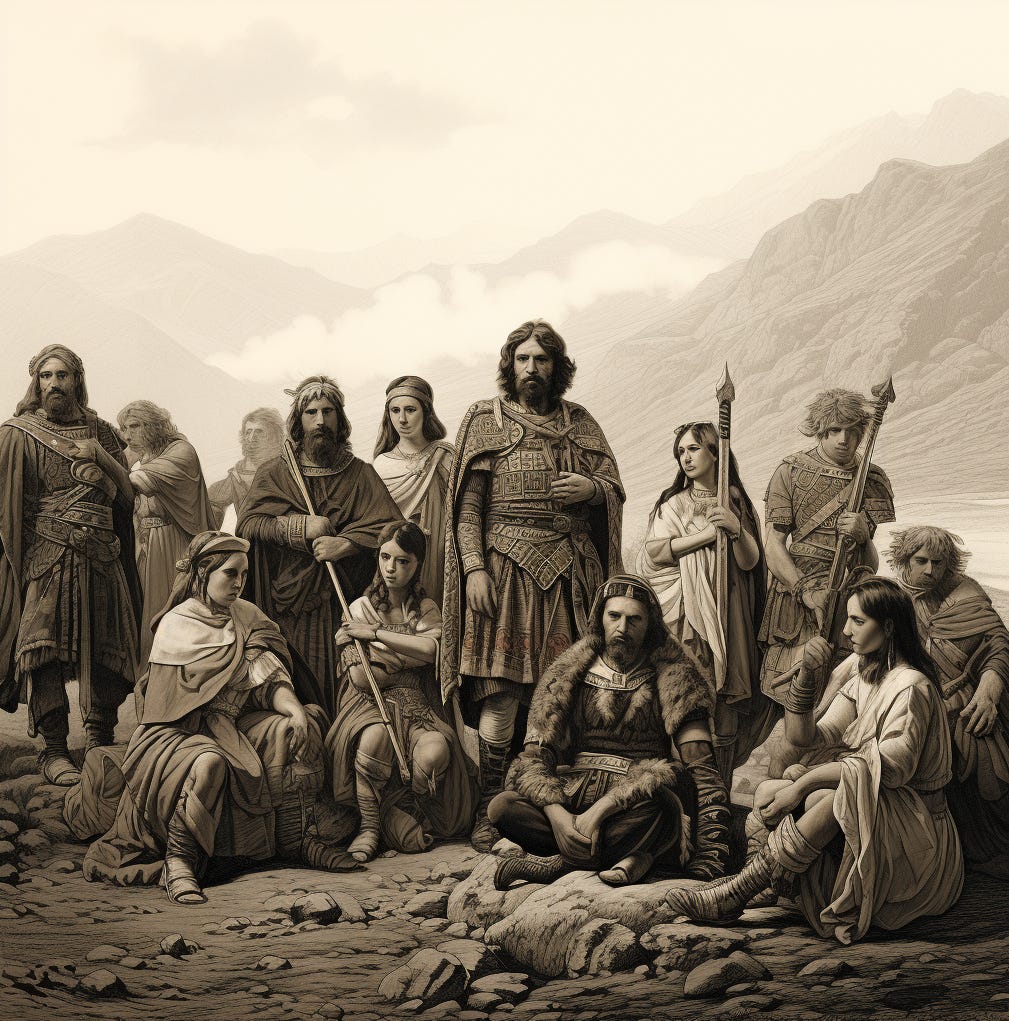The Colquhouns' Transition from Kilpatrick
In the storied landscape of Scottish history, the tale of the Colquhouns' evolution from Kilpatrick is not merely a footnote but a pivotal chapter that illuminates the intricate relationship between identity, land, and nobility. This saga begins with Umfridus de Kilpatrick, a figure whose lineage was deeply rooted in the soils of Scotland, yet it was his strategic acquisition and the consequential name change that marked the dawn of a new legacy for his descendants.
The transition from Kilpatrick to Colquhoun is emblematic of a broader theme in medieval Scotland, where the fluidity of surnames and the strategic importance of land ownership were intertwined. Umfridus’s decision to adopt the name of his newly acquired lands underscored a pivotal shift in the family’s trajectory, elevating them from the ranks of mere landholders to a name forever etched in the annals of Scottish nobility.
Land as the Cornerstone of Identity
The significance of land in medieval Scottish society cannot be overstated. It was the bedrock upon which social standing, wealth, and power were built. For Umfridus de Kilpatrick, the acquisition of the Colquhoun lands was not just a transaction of earth and soil; it was the acquisition of a new identity, one that would redefine his family's place in Scottish history. This transition highlights the dynamic nature of land as a catalyst for social mobility and transformation within the rigid structures of medieval society.
Land ownership was more than an economic asset; it was a source of influence, authority, and legacy. By adopting the name Colquhoun, Umfridus was not only asserting his dominion over these lands but also weaving his family into the very fabric of the territory they controlled. This act of naming was a powerful declaration of permanence and belonging, ensuring that the Colquhoun name would be synonymous with the lands they governed and protected.
Strategic Marriages and Clan Expansion
The story of the Colquhouns is also a tale of strategic alliances and matrimonial politics. The marriage of Sir Robert Colquhoun to the Fair Maid of Luss is a prime example of how matrimonial alliances were used as strategic tools for clan expansion and consolidation of power. This union not only merged the Colquhoun and Luss families but also significantly enlarged the Colquhouns' territorial claims, illustrating the pivotal role marriages played in the chessboard of clan politics.
These alliances were meticulously crafted, with each marriage serving as a bridge between families, territories, and power bases. They were not mere social contracts but strategic decisions that shaped the political landscape of Scotland, cementing alliances, and sometimes, averting conflicts. Through these unions, the Colquhouns were able to navigate the tumultuous waters of medieval Scottish politics, securing their legacy and expanding their influence across the highlands.
The Legacy of Strategic Decisions
The Colquhouns' journey from Kilpatrick to a name that commanded respect and authority in Scotland is a testament to the foresight and strategic acumen of its early patriarchs. The decision to adopt the Colquhoun name from their newly acquired lands was a masterstroke of identity branding that underscored the importance of land in shaping noble legacies.
As we delve deeper into the fabric of Scottish clan history, the Colquhouns stand out as a beacon of strategic ingenuity, showcasing how adaptability, strategic marriages, and a deep connection to the land were instrumental in carving out a lasting legacy. Their story is a compelling narrative of ambition, identity, and the unyielding power of the land, serving as a vivid reminder of the complexities and dynamism of medieval Scottish society.
The saga of the Colquhouns, from Kilpatrick to the vast expanses of Luss, is more than a tale of name changes and land acquisitions; it is a chronicle of survival, strategy, and the indomitable spirit of a family that shaped its destiny through the power of the land. It is a narrative that resonates with the themes of adaptation and resilience, echoing through the highlands and across the lochs of Scotland, a timeless testament to the legacy of the Colquhouns.





